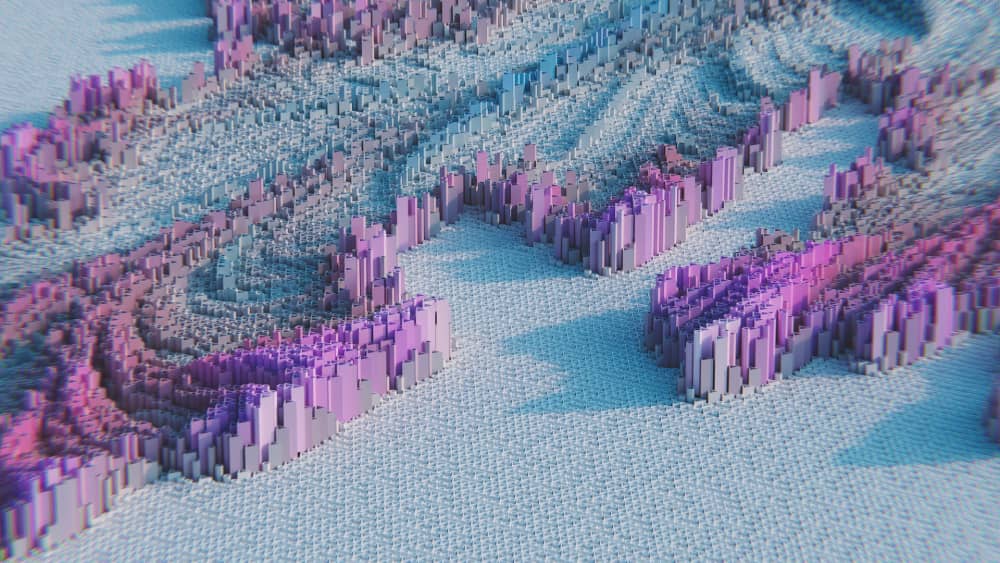If you’re a game developer, you’ve probably seen some pretty incredible 3D environments over the years. That’s because an integral part of creating any game is building out the world that players inhabit. Whether your game takes place in a futuristic city or an alien planet filled with dinosaurs and volcanoes, there needs to be somewhere for players to explore. As such, game developers have created stunningly detailed worlds using software like Maya and Unreal Engine; these tools are invaluable in creating realistic-looking environments that immerse players into an immersive experience they won’t forget!

What is a 3D Environment Artist?
A 3d environment artist is responsible for the creation of 3D environments. They use 3D modeling and animation software to create 3D models, 2D painting software to create textures and materials, and rendering software to create final images.
The following are some examples of their work:
- Creating a realistic environment that can be used as a game level or movie set
- Creating an animated scene that enhances the narrative of your story (e.g., an animated cutscene)
As a 3D environment artist, you are responsible for creating the world that players will explore. You are also responsible for creating the aesthetic and mood of your game. This means that you’ll need to be able to create objects that look realistic and believable in any situation from an ancient temple to a modern cityscape; from a small village or large metropolis; from industrial factories to lush forests.
Defining the Role of a 3D Environment Artist
A 3D environment artist is responsible for creating the world that you see on-screen. They create 3D models and textures, and use them in games, movies and other forms of media.
They use 3D software to create environments, characters and props that are used by other artists in the pipeline such as animators or character artists. Environment artists also work with lighting artists to make sure that everything looks realistic when rendered out by a rendering engine.
The Role of the 3D Environment Artist in Creating High-Quality 3D Environments
Creating high-quality 3D environments is a meticulous art that requires a blend of technical skills and artistic creativity. At the heart of this process is the role of the 3D environment artist. These skilled professionals are responsible for crafting immersive and visually stunning worlds for various mediums like gaming, movies or virtual reality.
With an eye for detail, the 3D environment artist meticulously constructs the elements that make up a convincing and engaging environment, such as landscapes, buildings, props, and textures. They employ advanced software and tools to model, texture, and light the scene, ensuring that every aspect is meticulously designed to capture the desired mood and atmosphere.
To achieve realism, the 3D environment artist combines knowledge of lighting, composition, and color theory with expert technical skills in modeling, texturing, and rendering. They must also possess a keen understanding of the subject matter and the ability to research and reference real-world examples to ensure authenticity.
Collaboration is essential in this creative process, as the 3D environment artist works closely with other members of the production team, such as concept artists, level designers, and animators. By understanding the vision of the project and effectively communicating with team members, they ensure that the environments they create align with the overall narrative and aesthetic.
In conclusion, the role of the 3D environment artist is crucial in bringing virtual worlds to life. They combine technical expertise with artistic sensibilities to construct immersive and visually stunning environments, ensuring that each detail contributes to the overall experience. Their dedication and passion for their craft make them an integral part of creating high-quality 3D environments for various media platforms.
A Brief History of Game Development with 3D Modeling and Animation Software
The history of game development is a long one, but it’s worth taking a look at how we got here. In the early days, many games were simply 2D and used sprites as characters or objects in their environments. The first 3D modeler was Maxon Cinema 4D (released in 1994), which allowed artists to create 3D models using polygons instead of just flat images like sprites did and eventually led to photorealistic rendering capabilities with its successor CINEMA 4D R20+.
With these advancements came new opportunities for those who wished to pursue careers as 3D environment artists: people who could use programs like Maya LT or Blender for creating digital environments for games such as Assassin’s Creed Odyssey!
Conclusion
I hope this article has helped you to understand the integral role of a 3D Environment Artist. It’s easy to think that once you know how to use tools like Maya or Unreal Engine, you’re all set. The world we live in is full of color and texture; it feels real because it is real and the same goes for our virtual environments as well.

